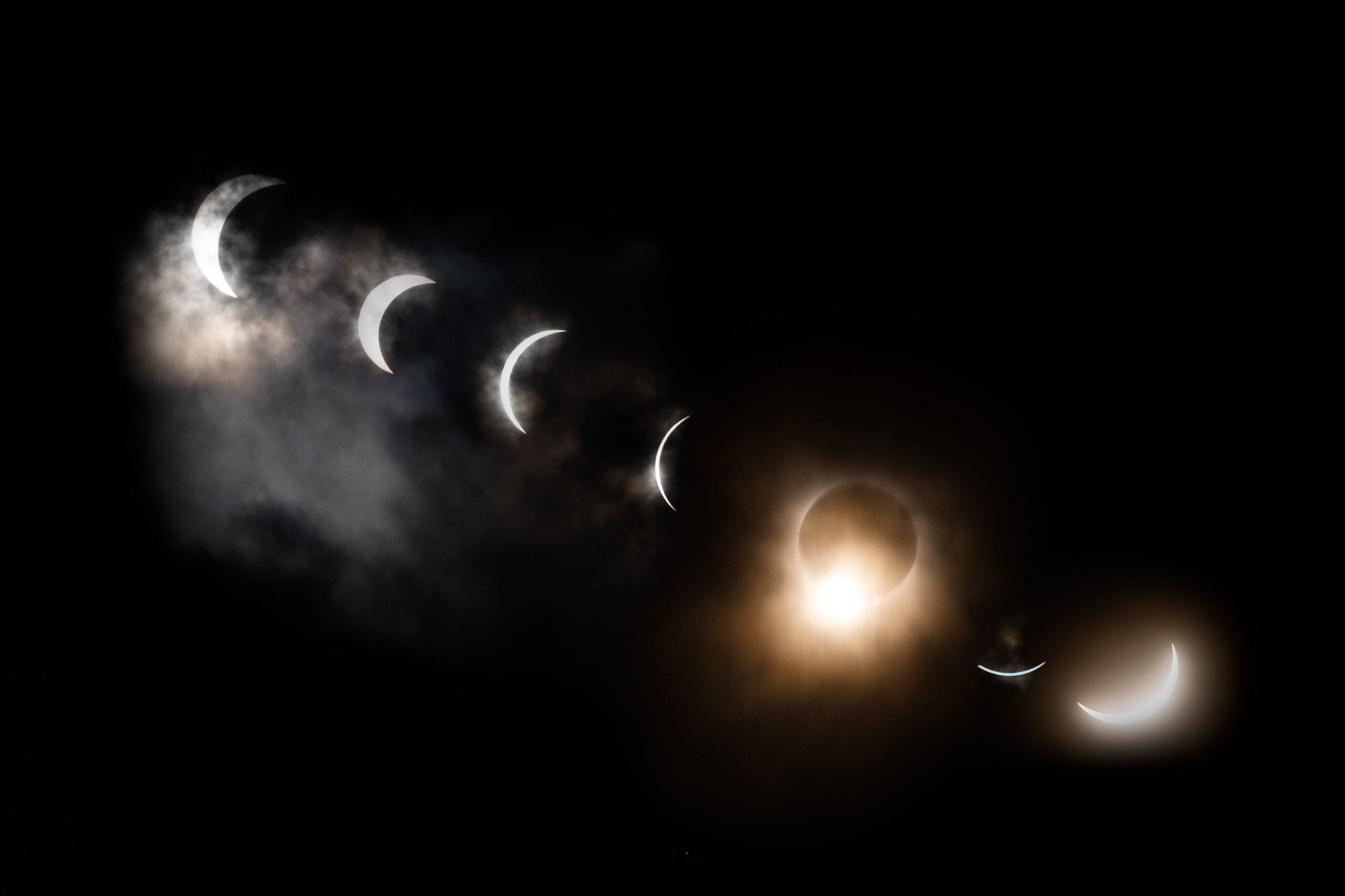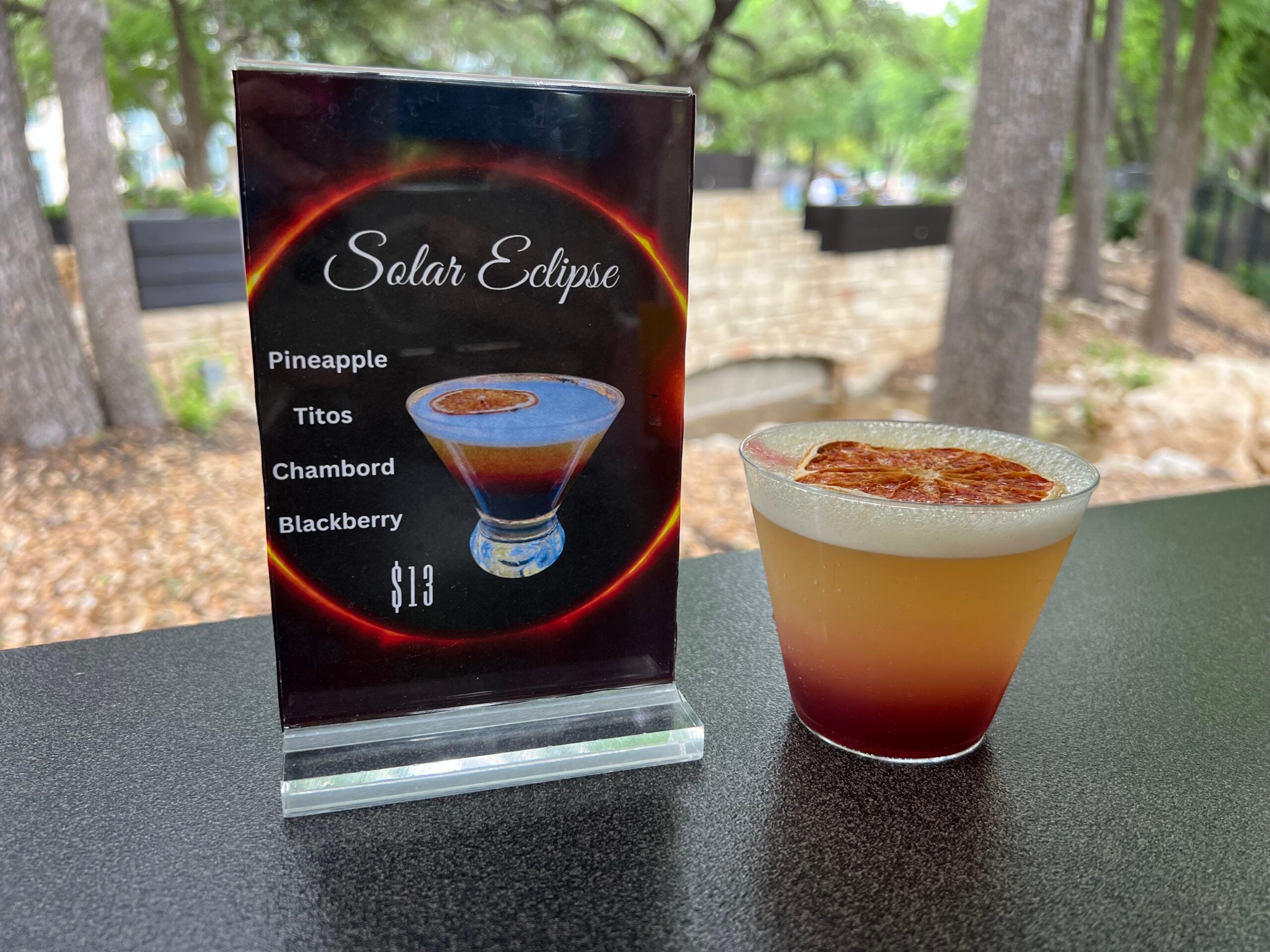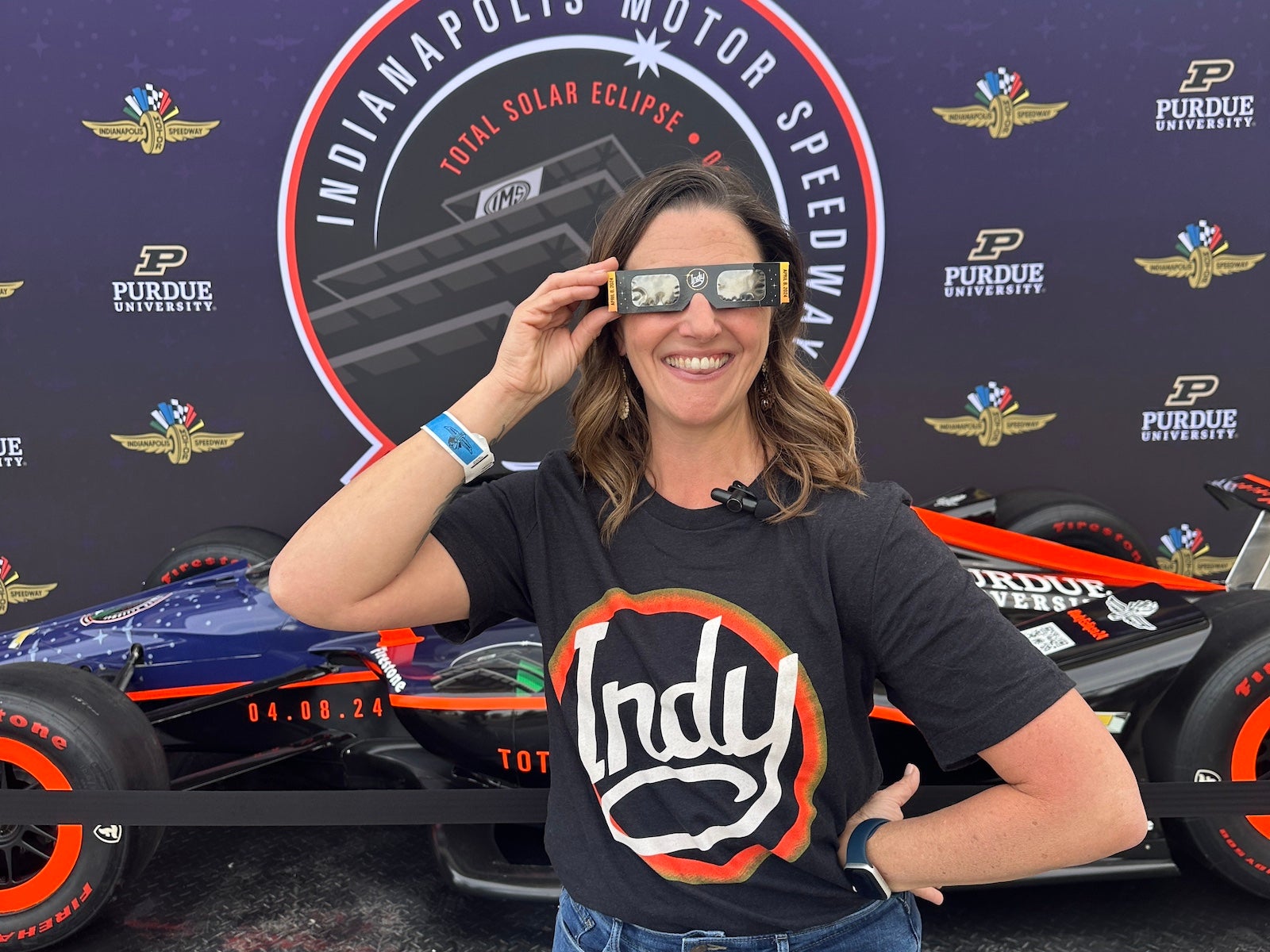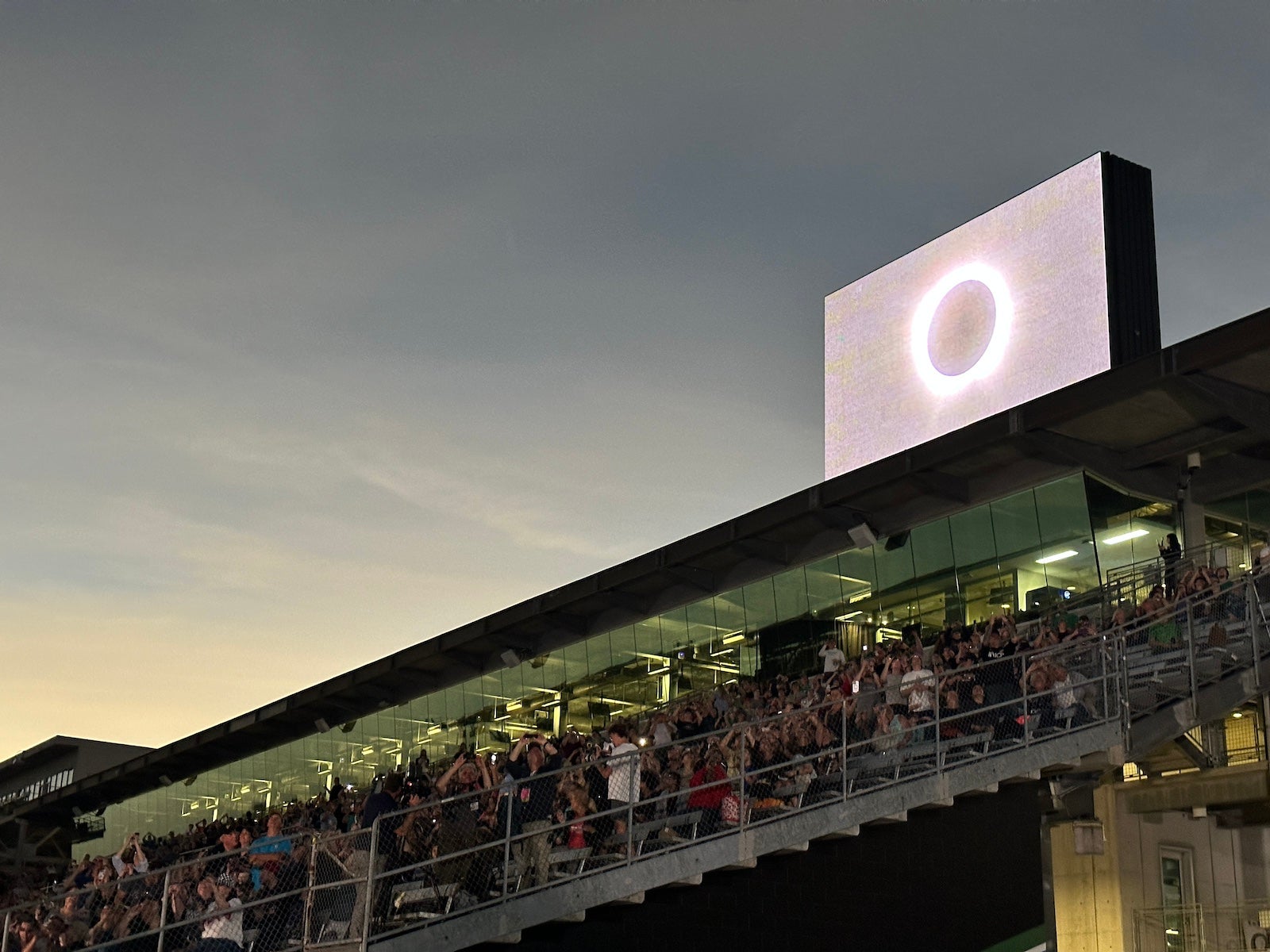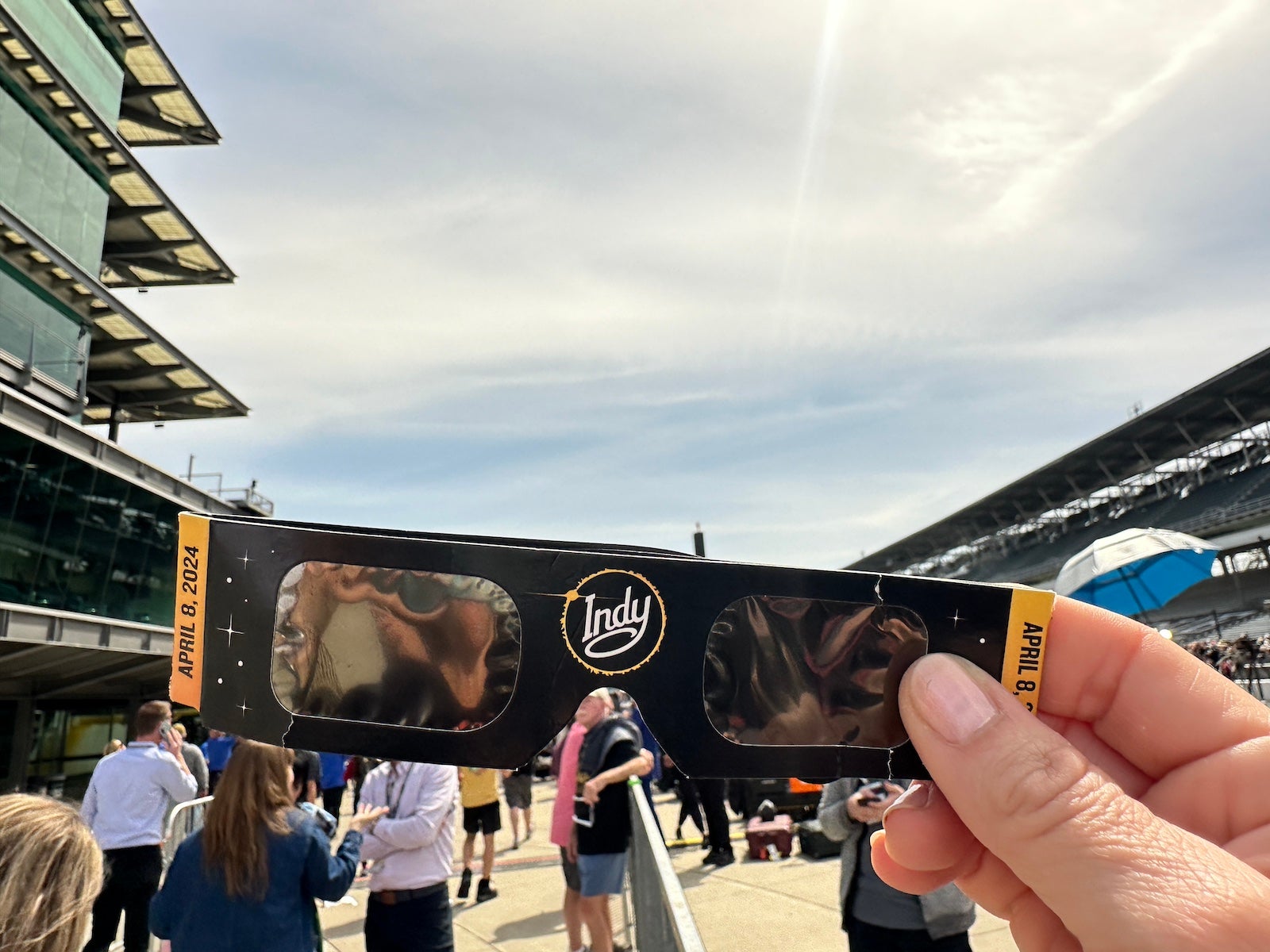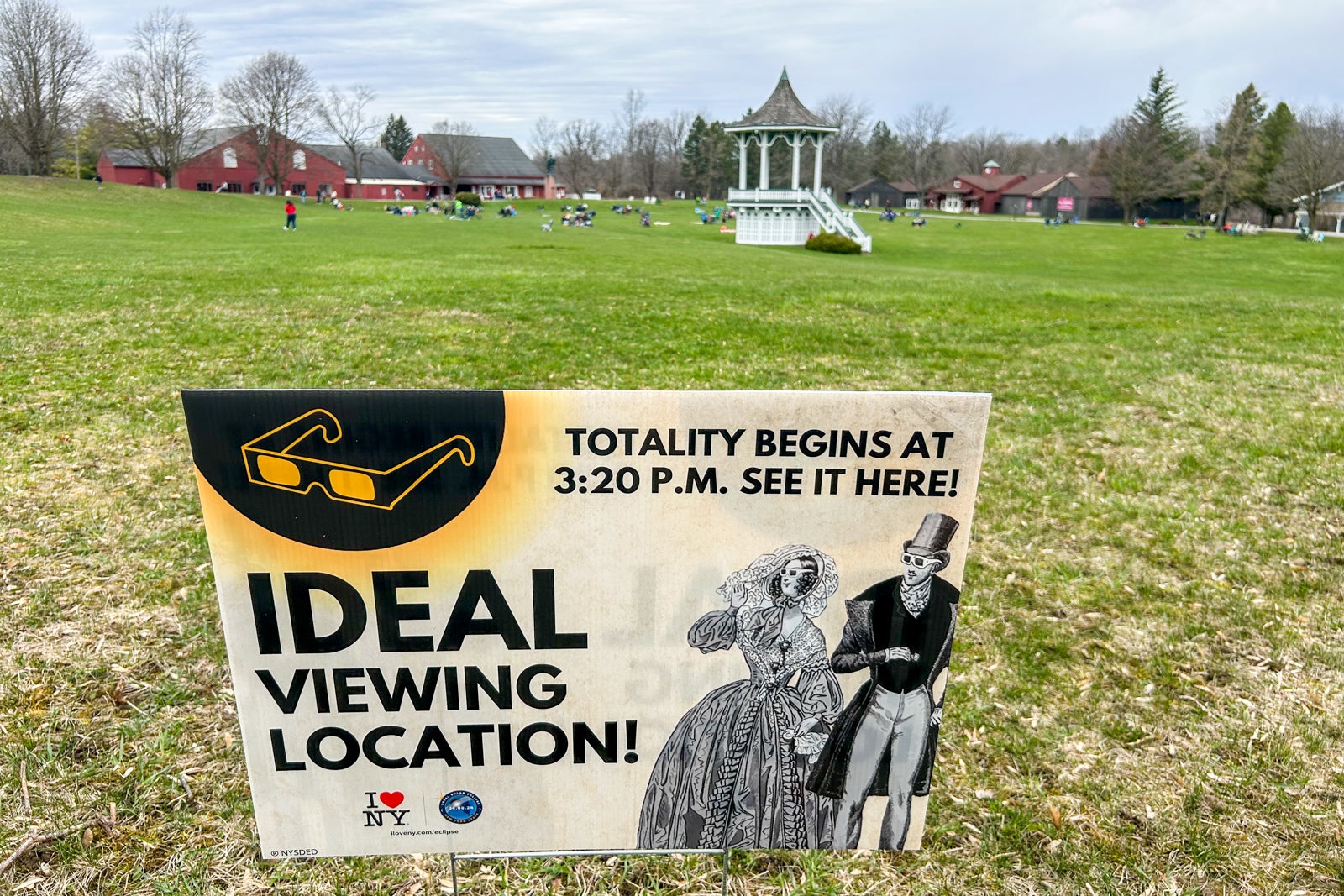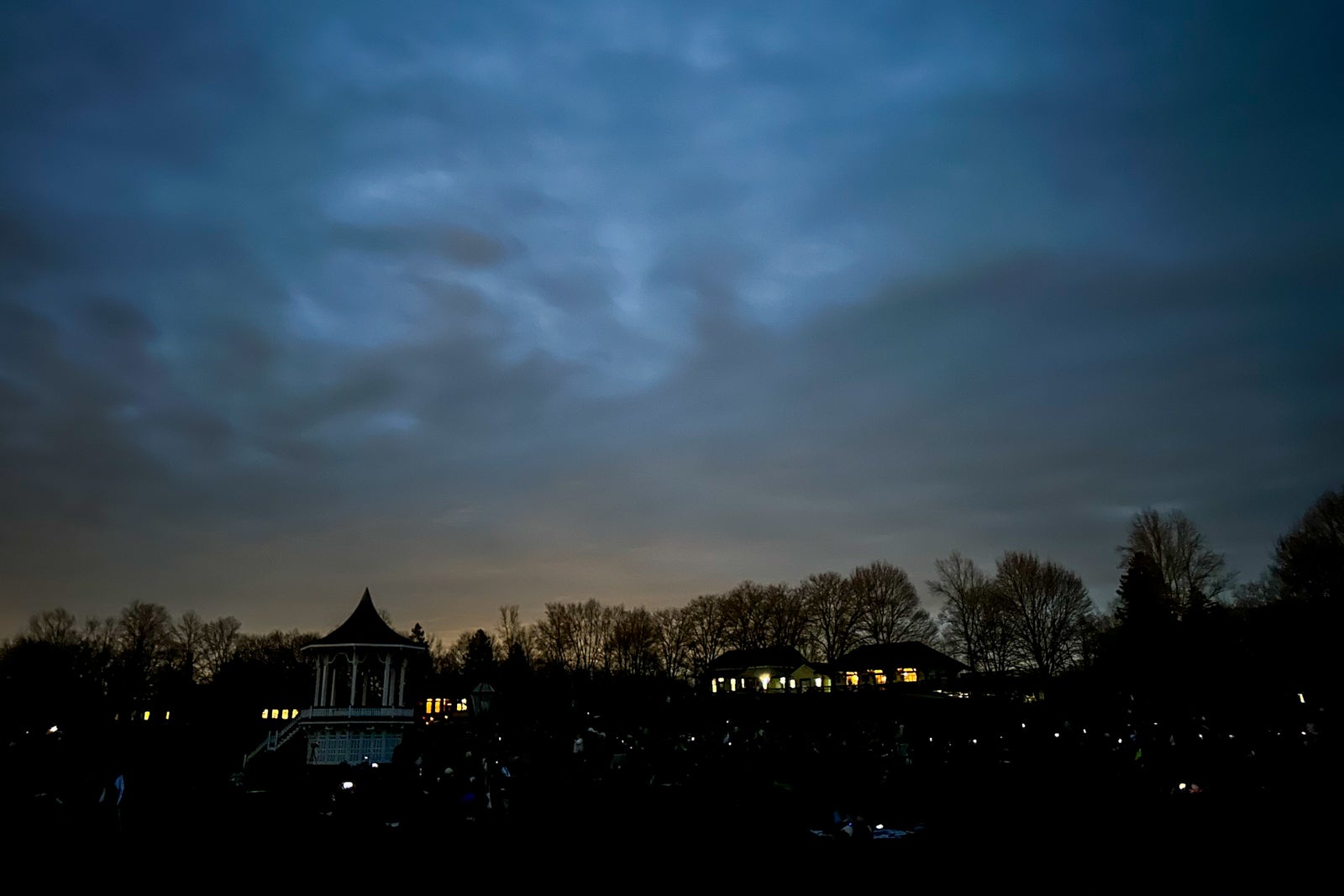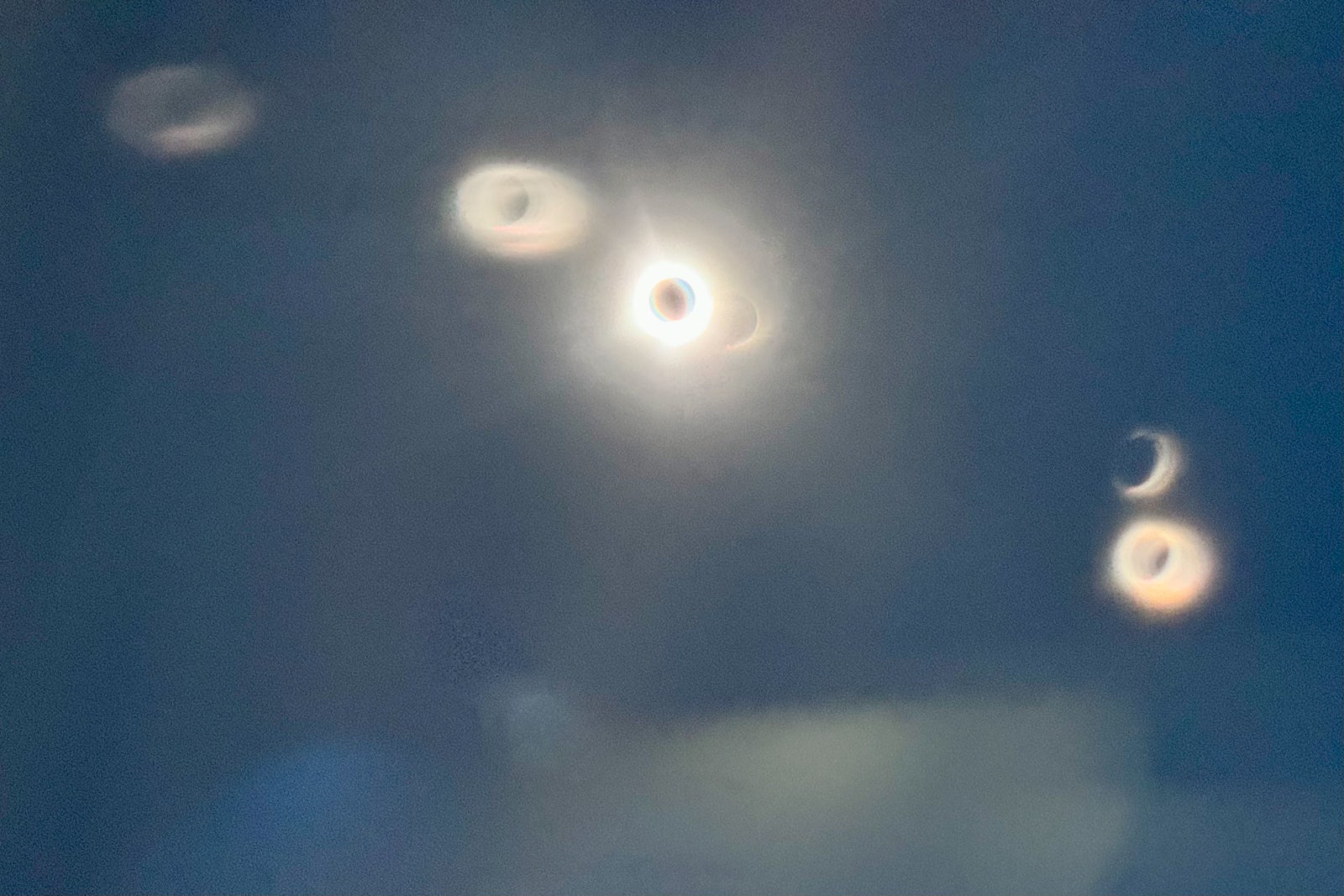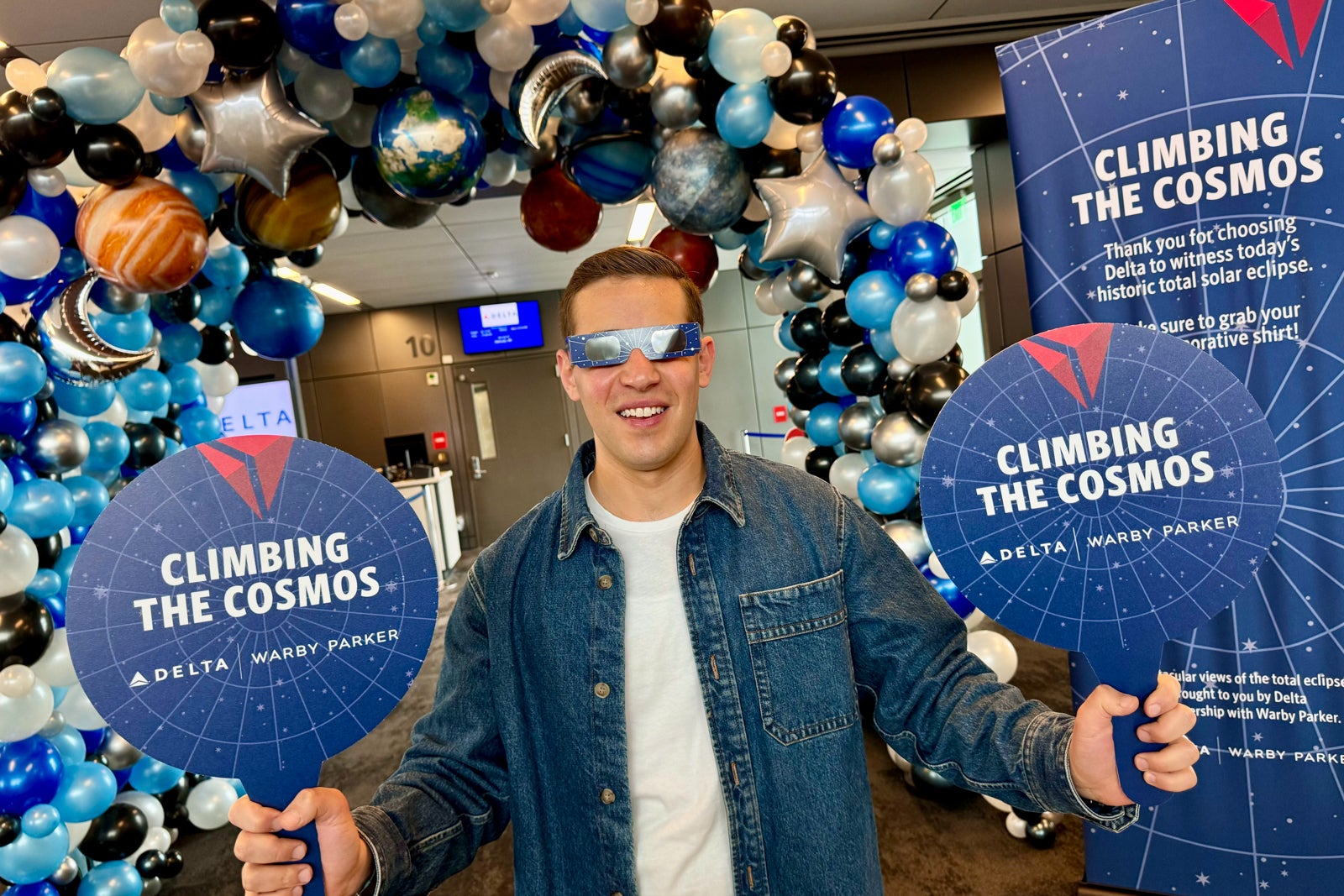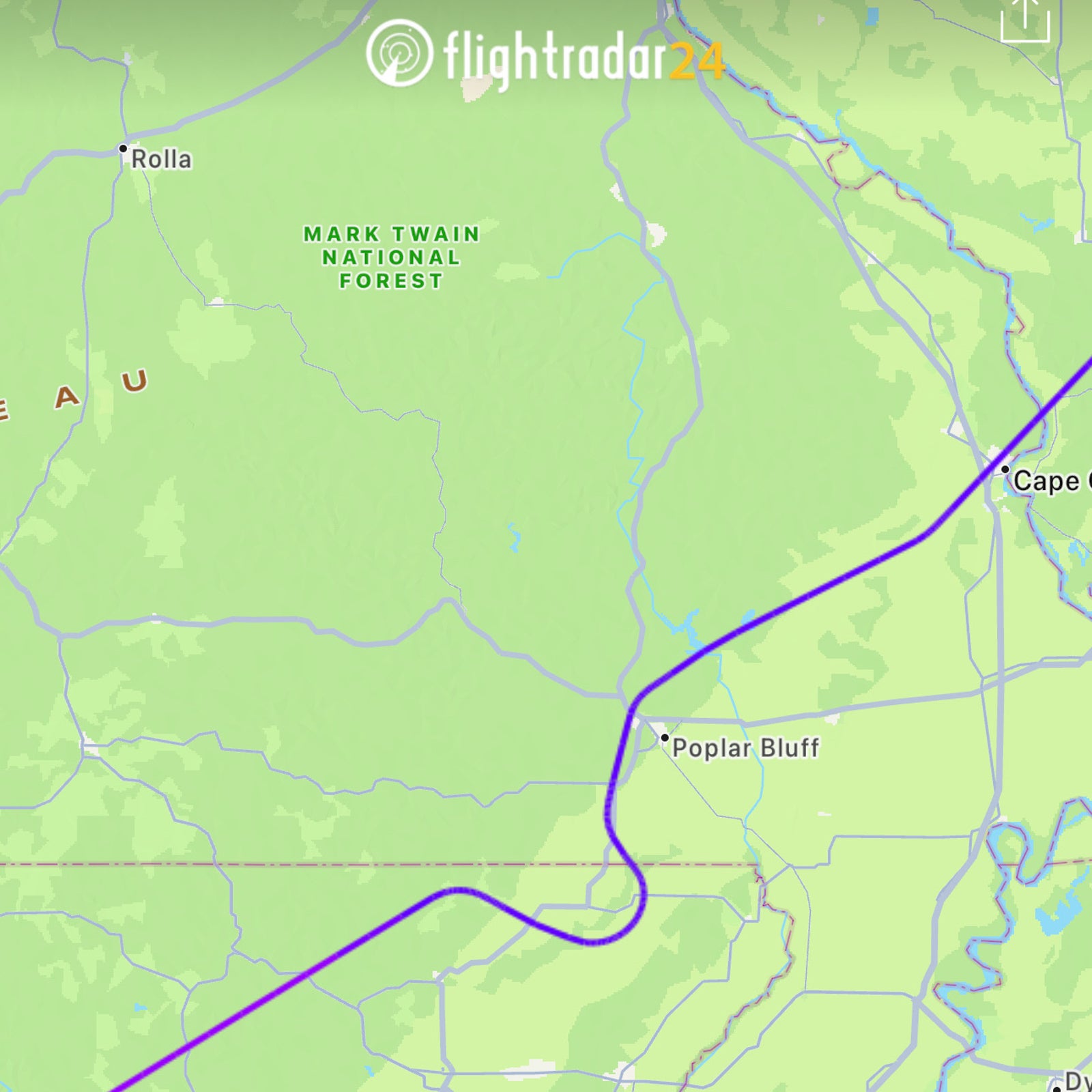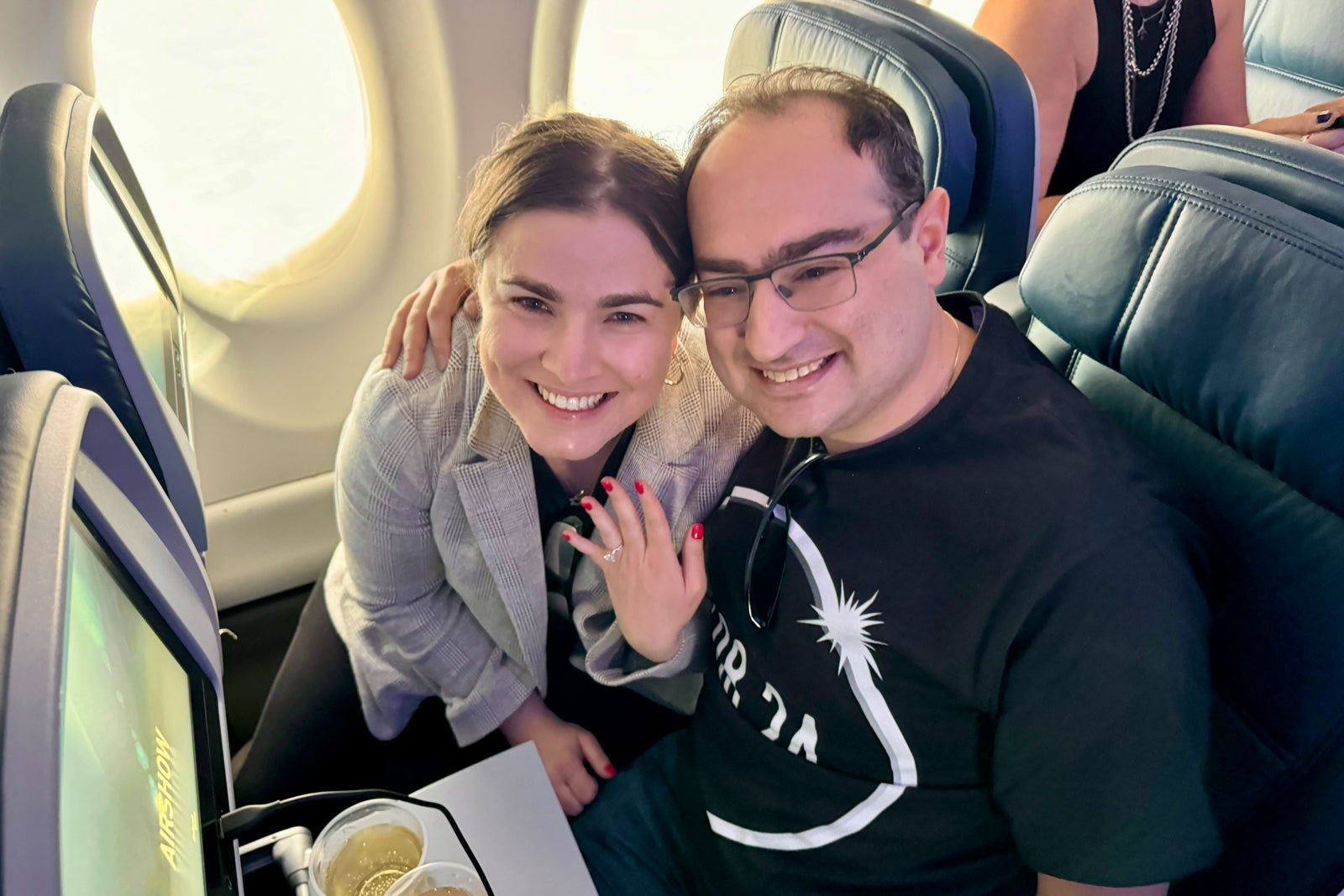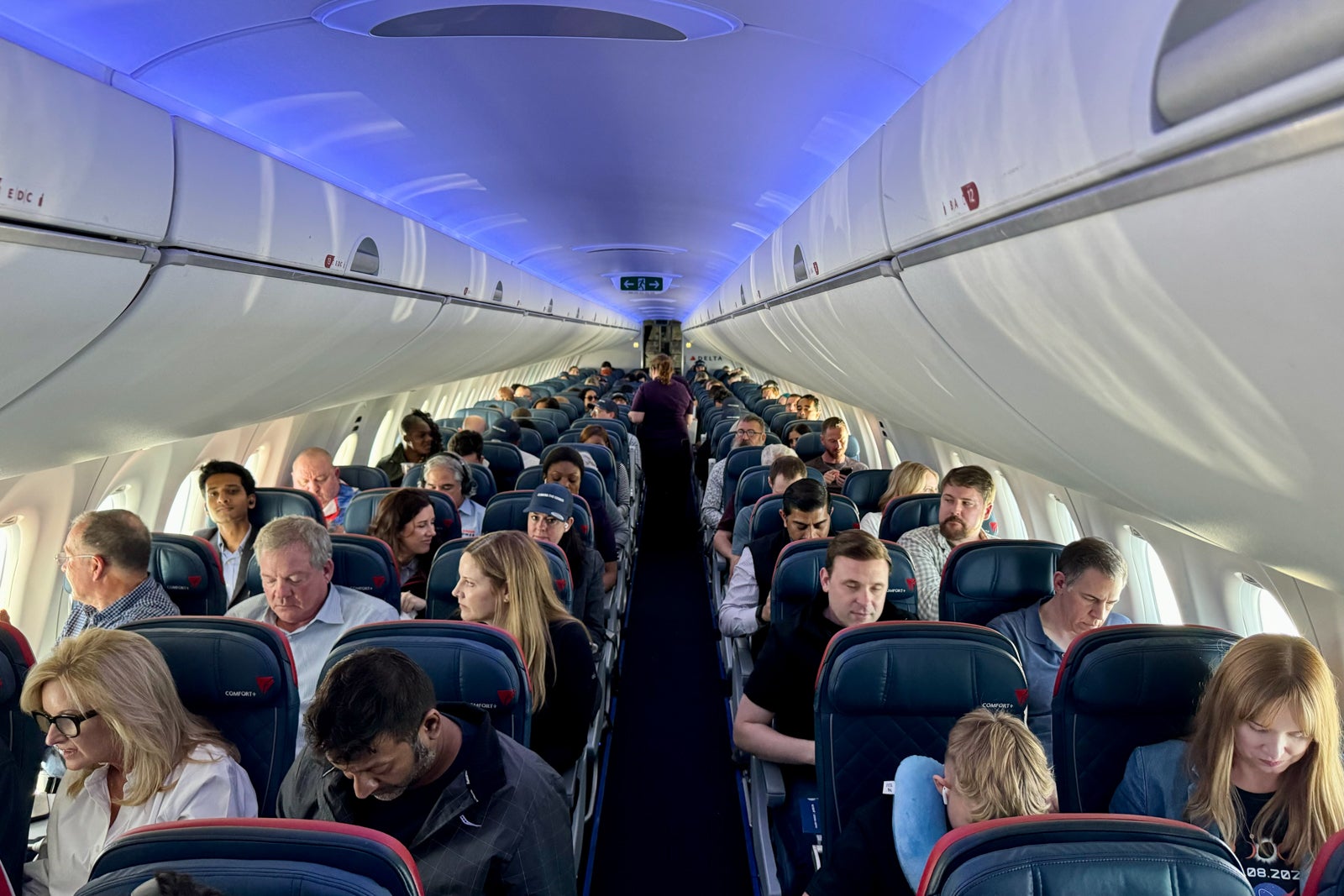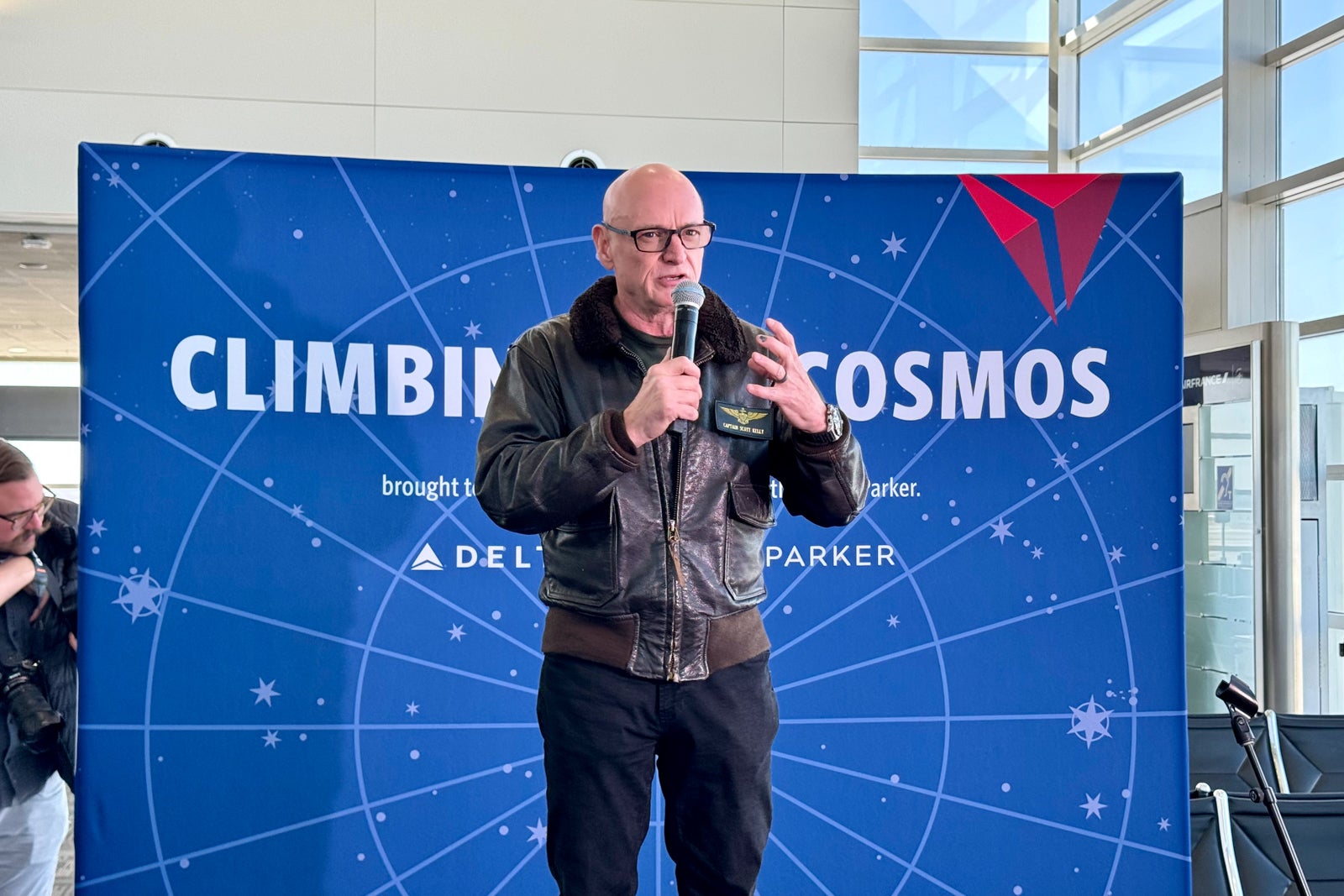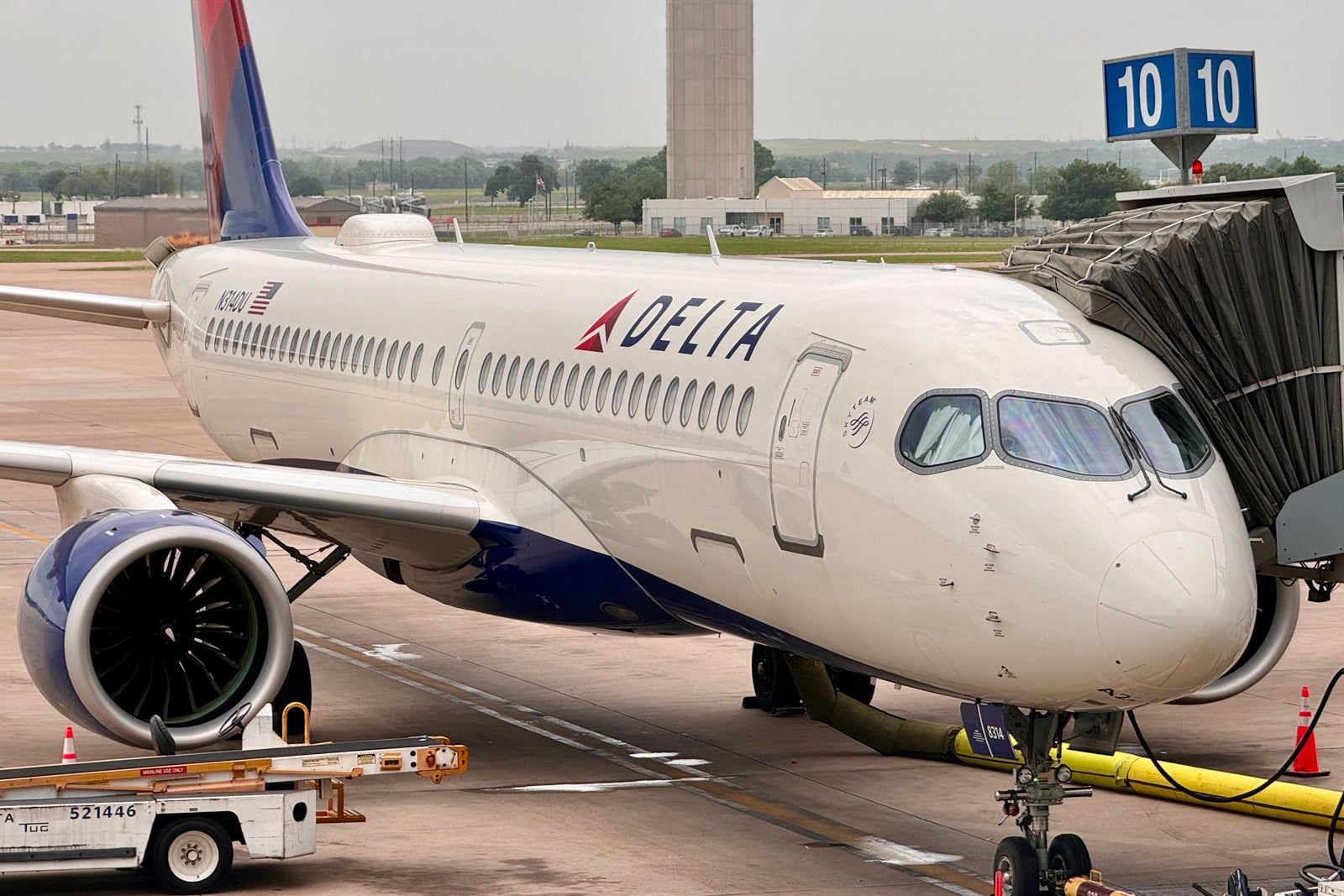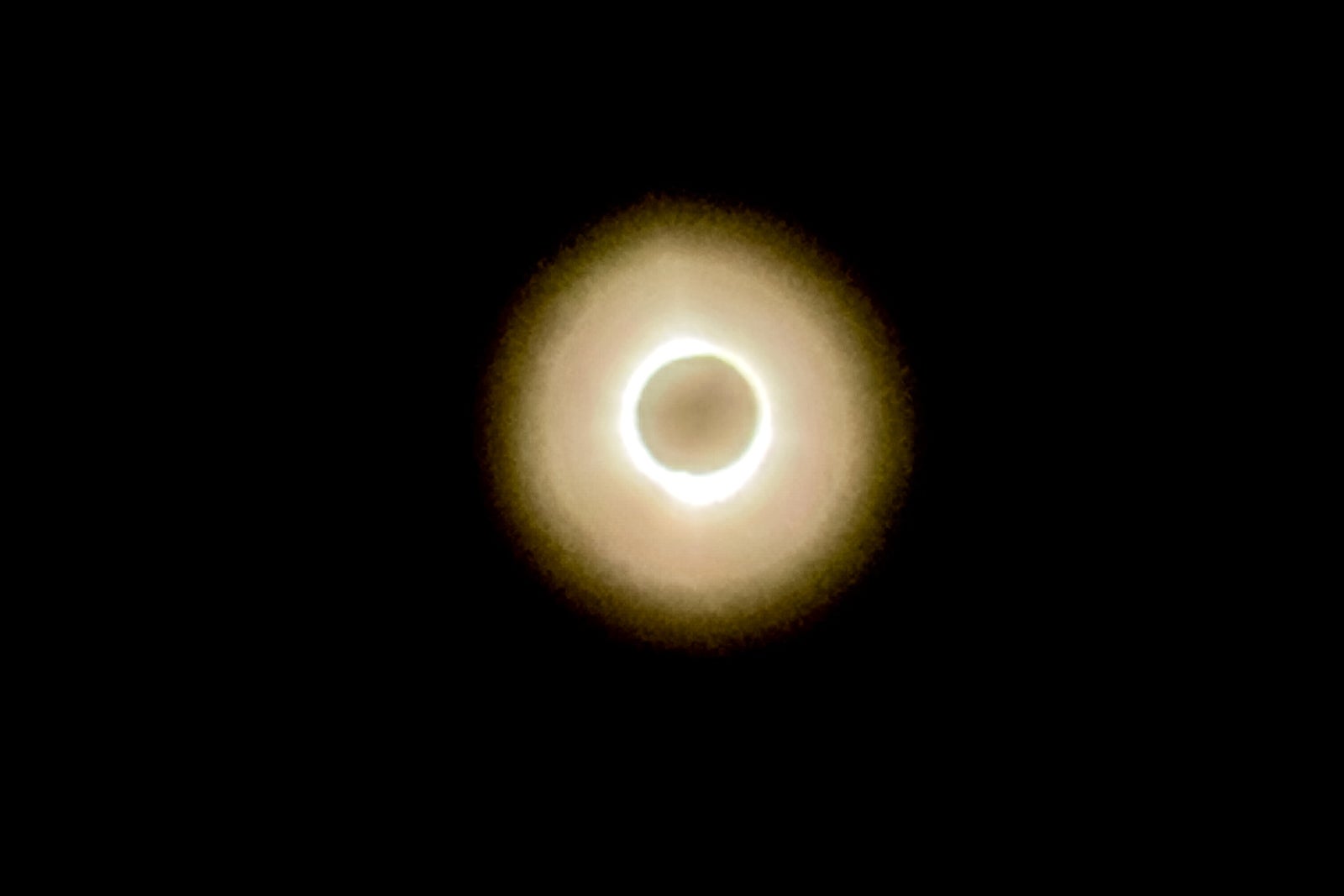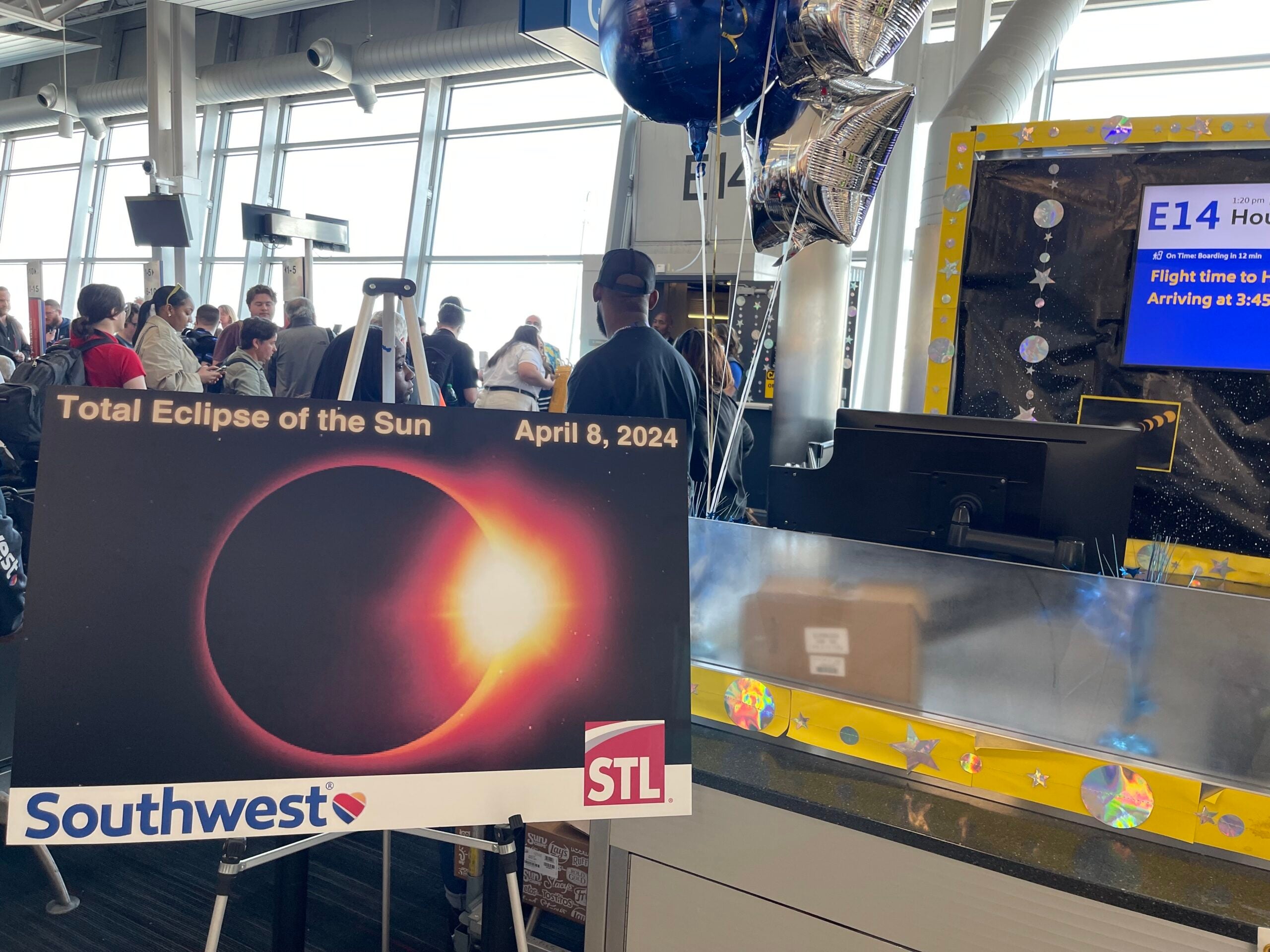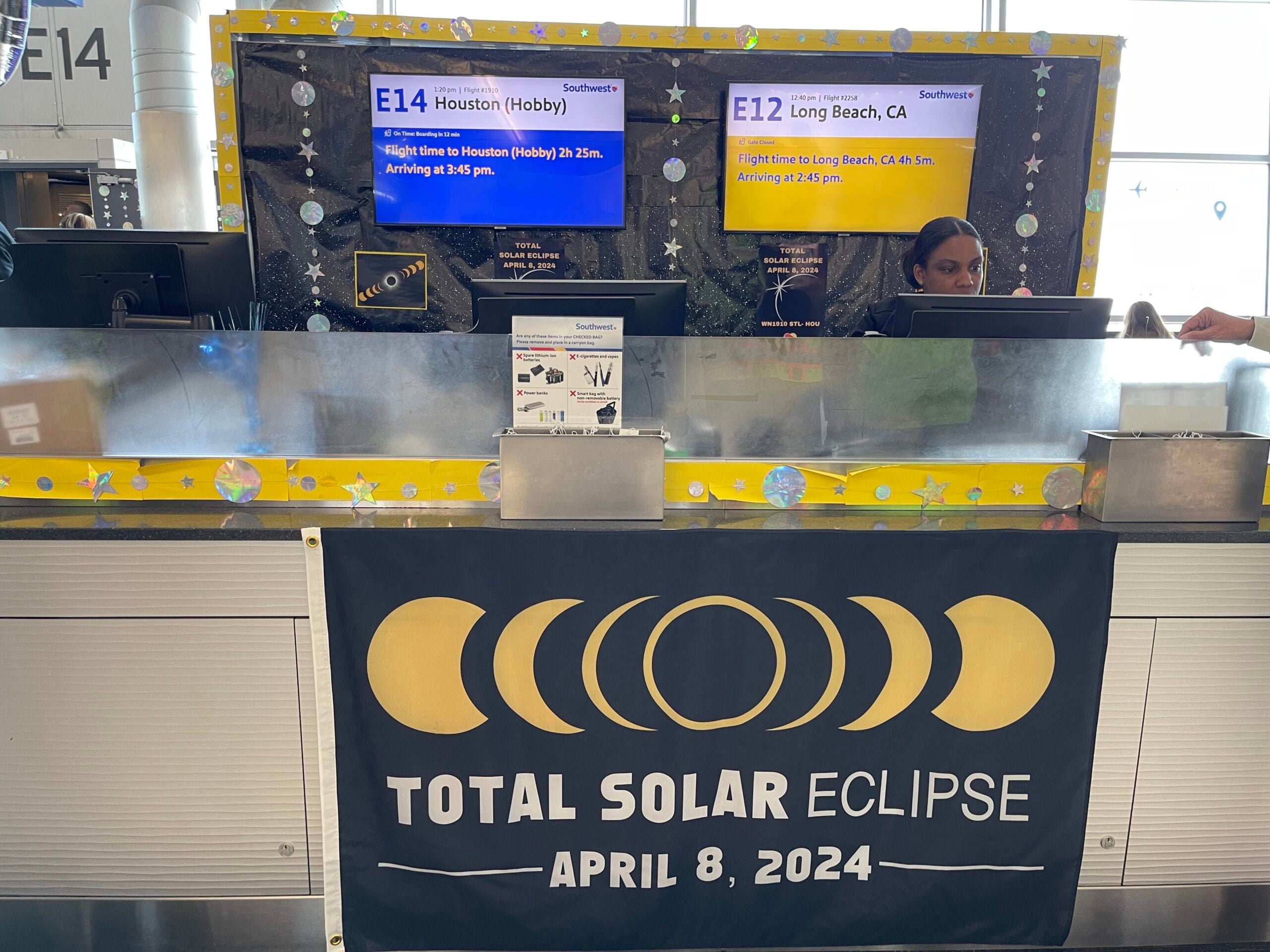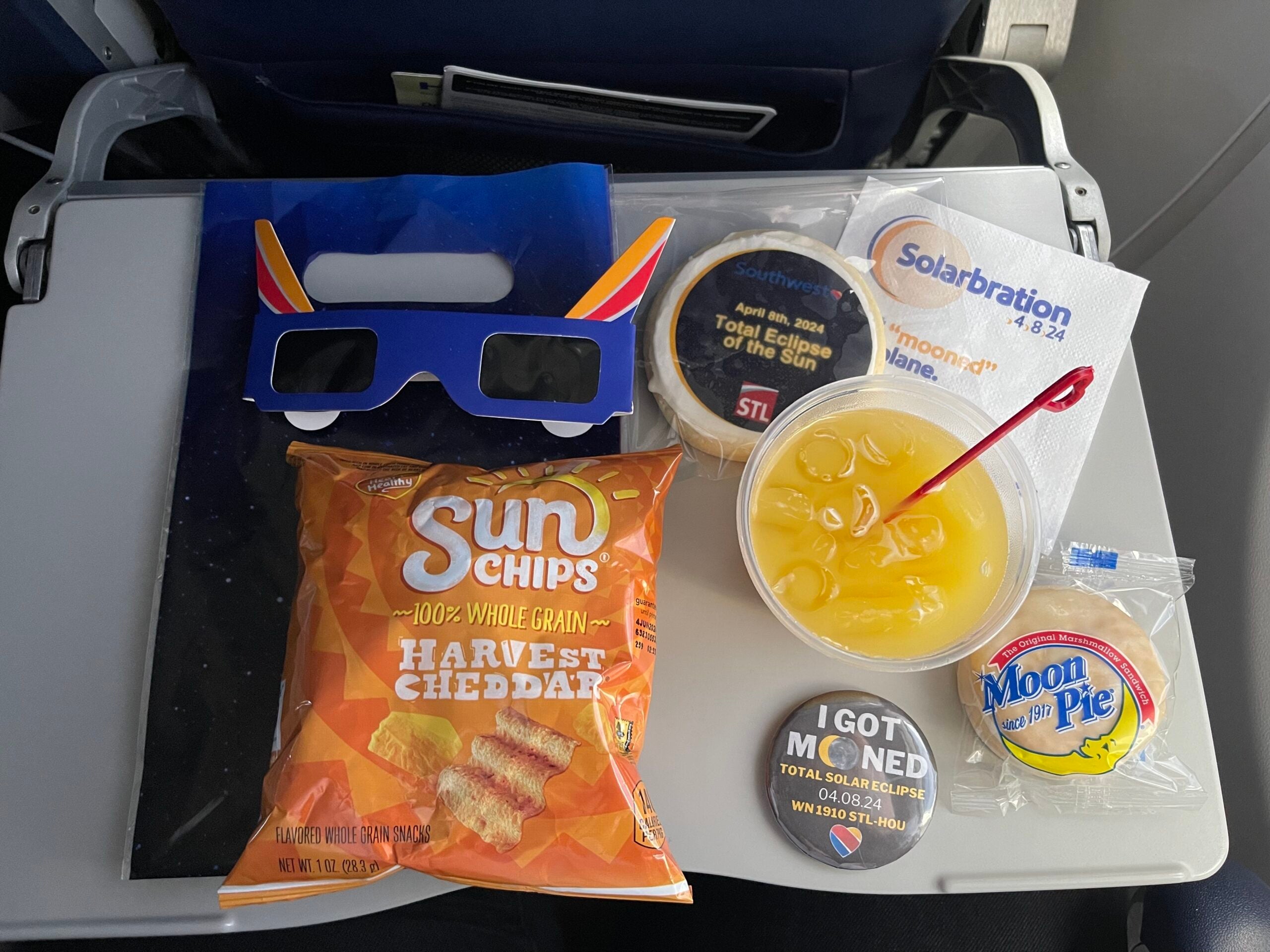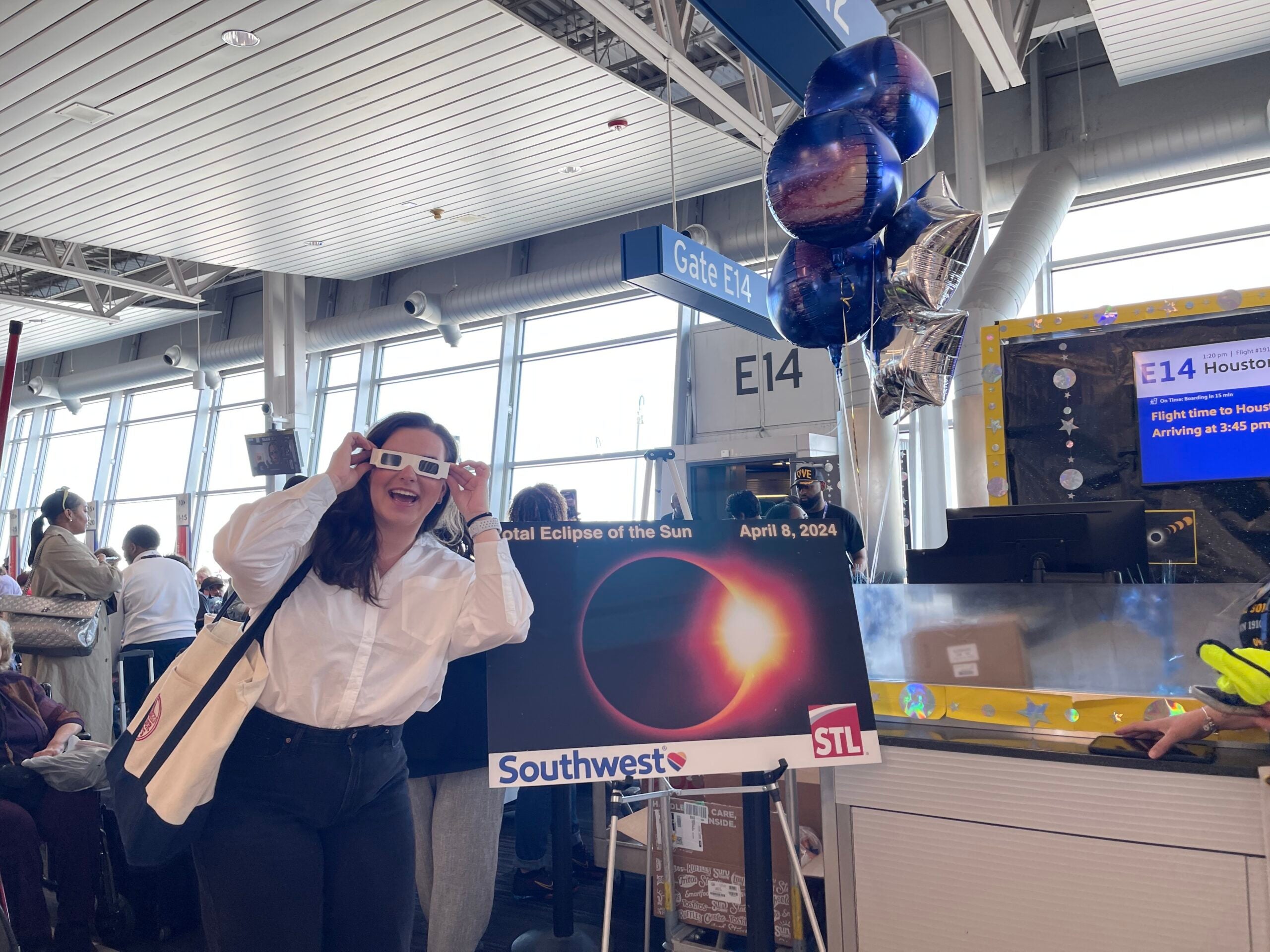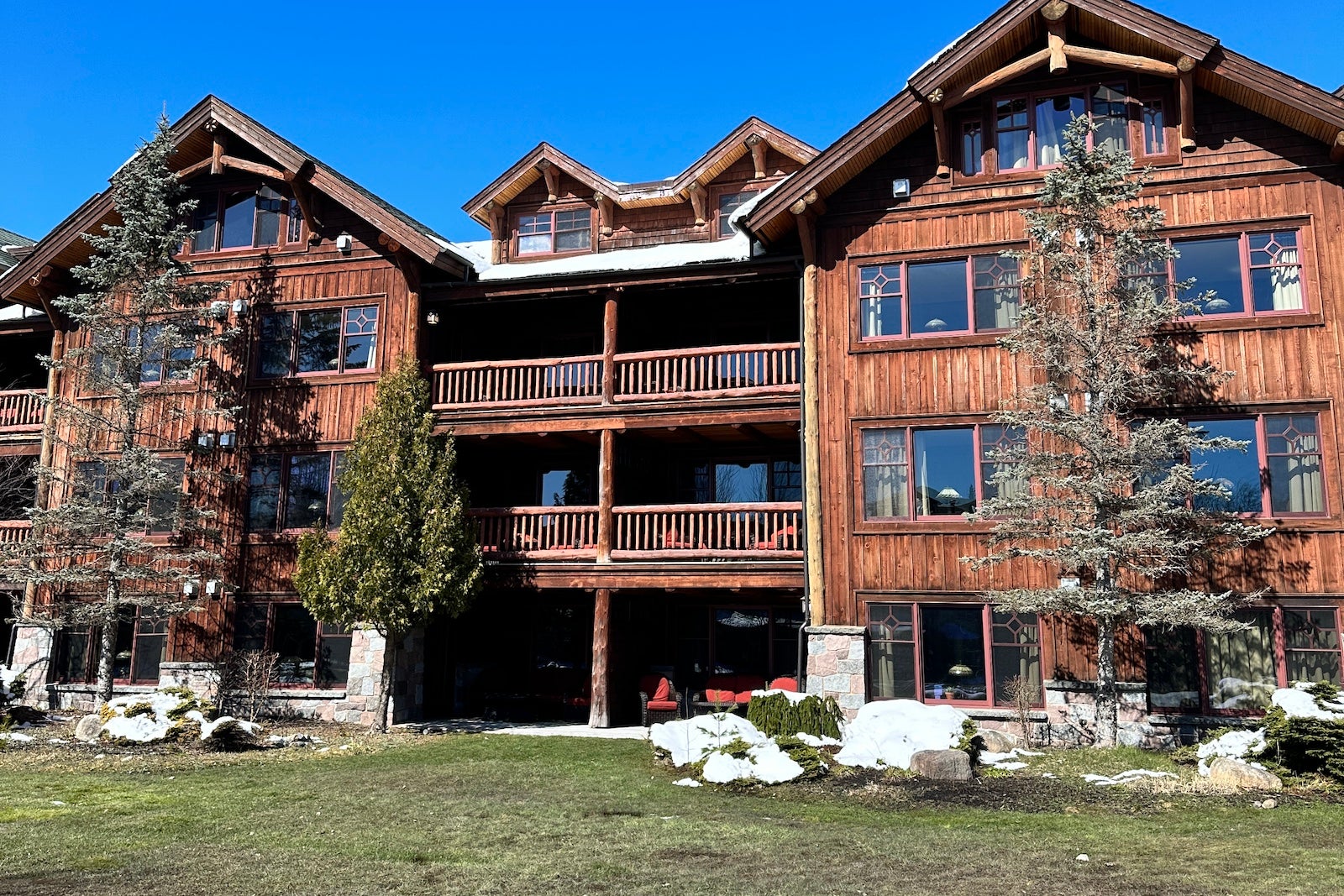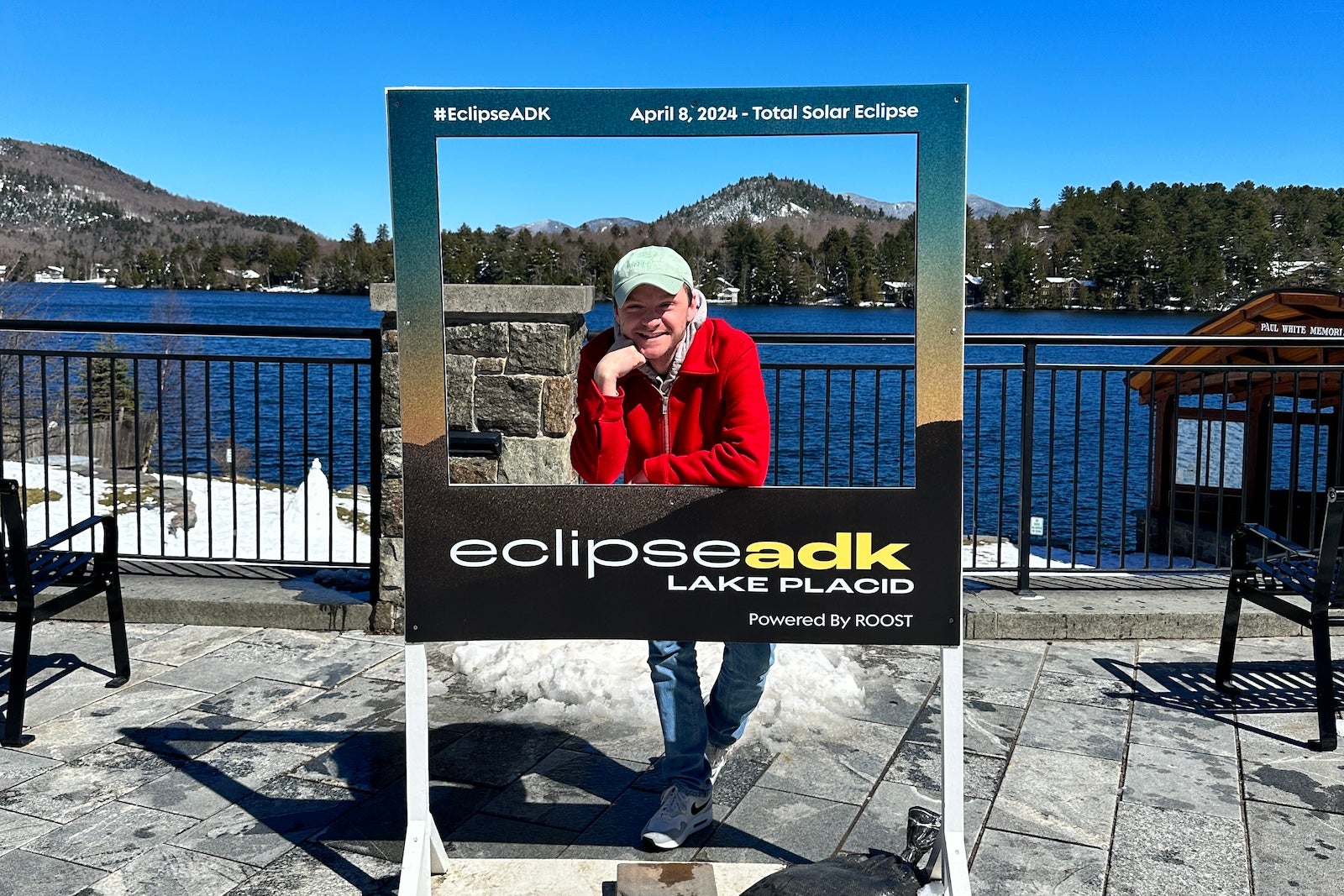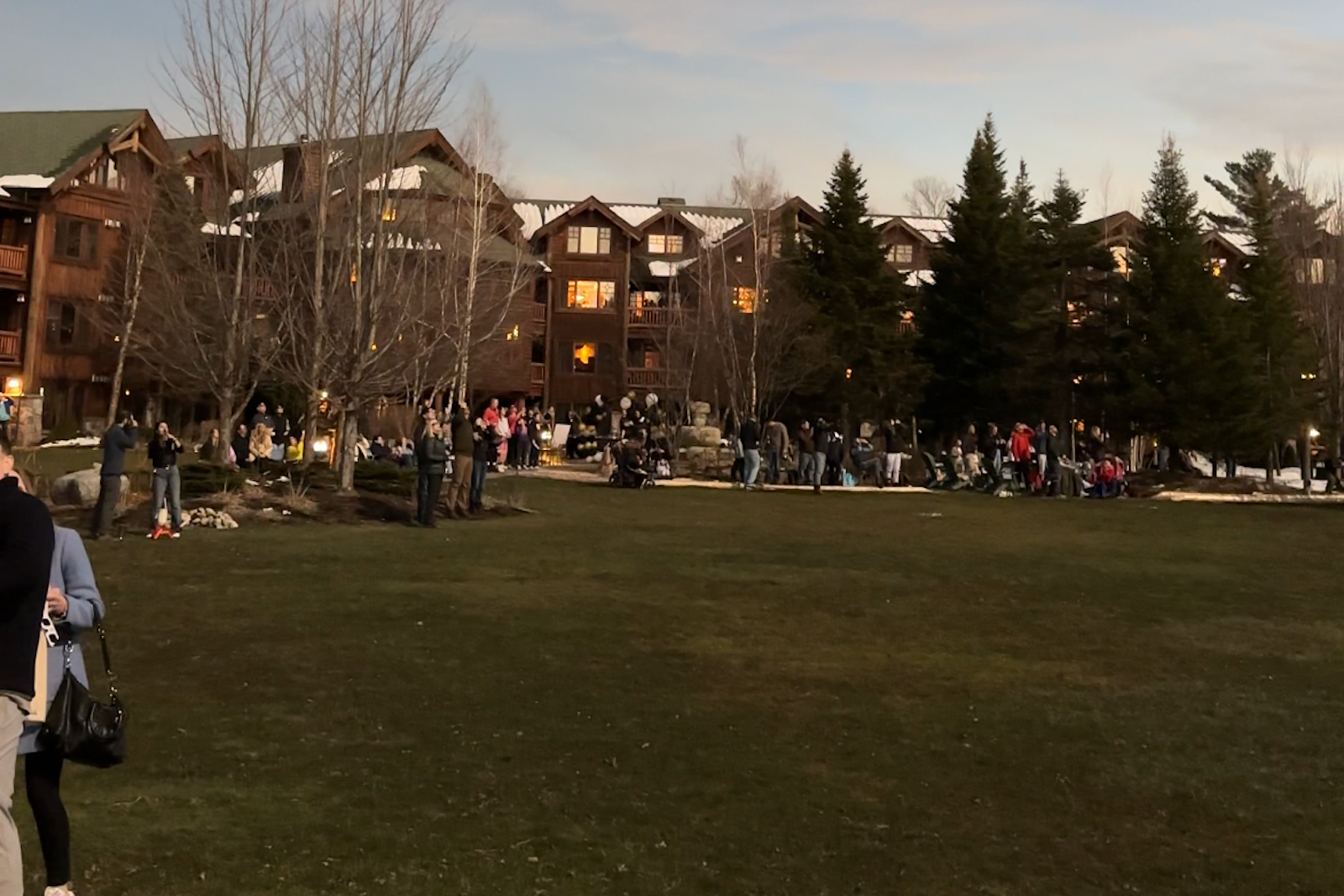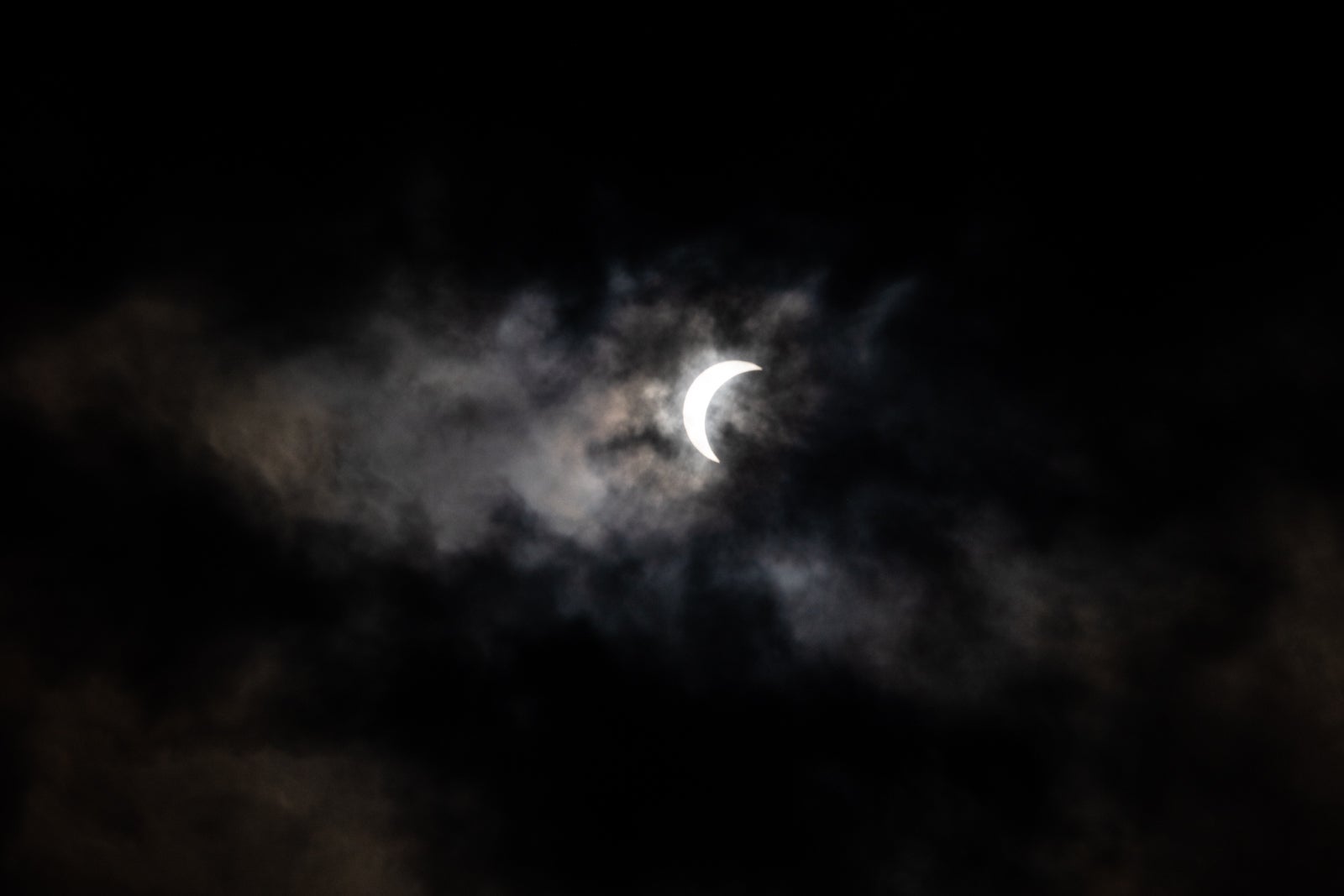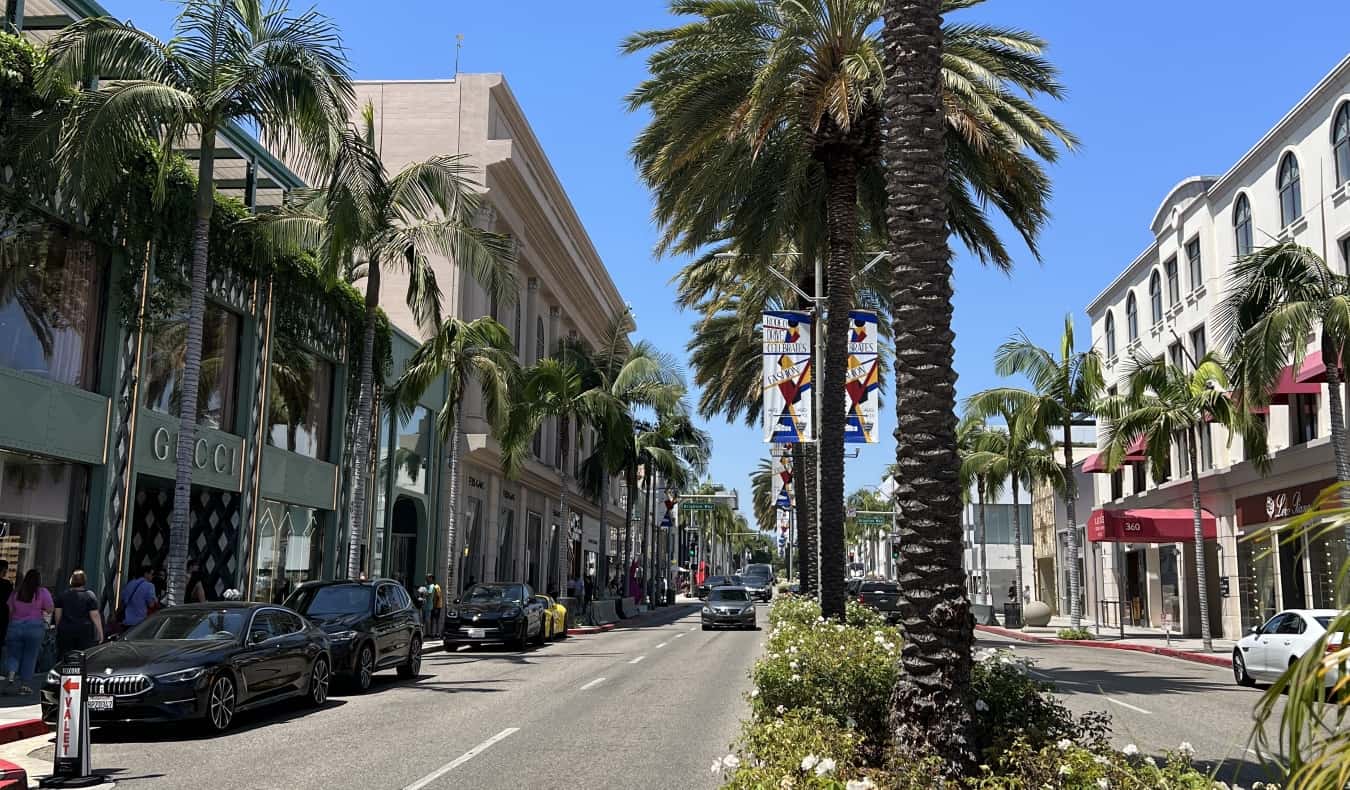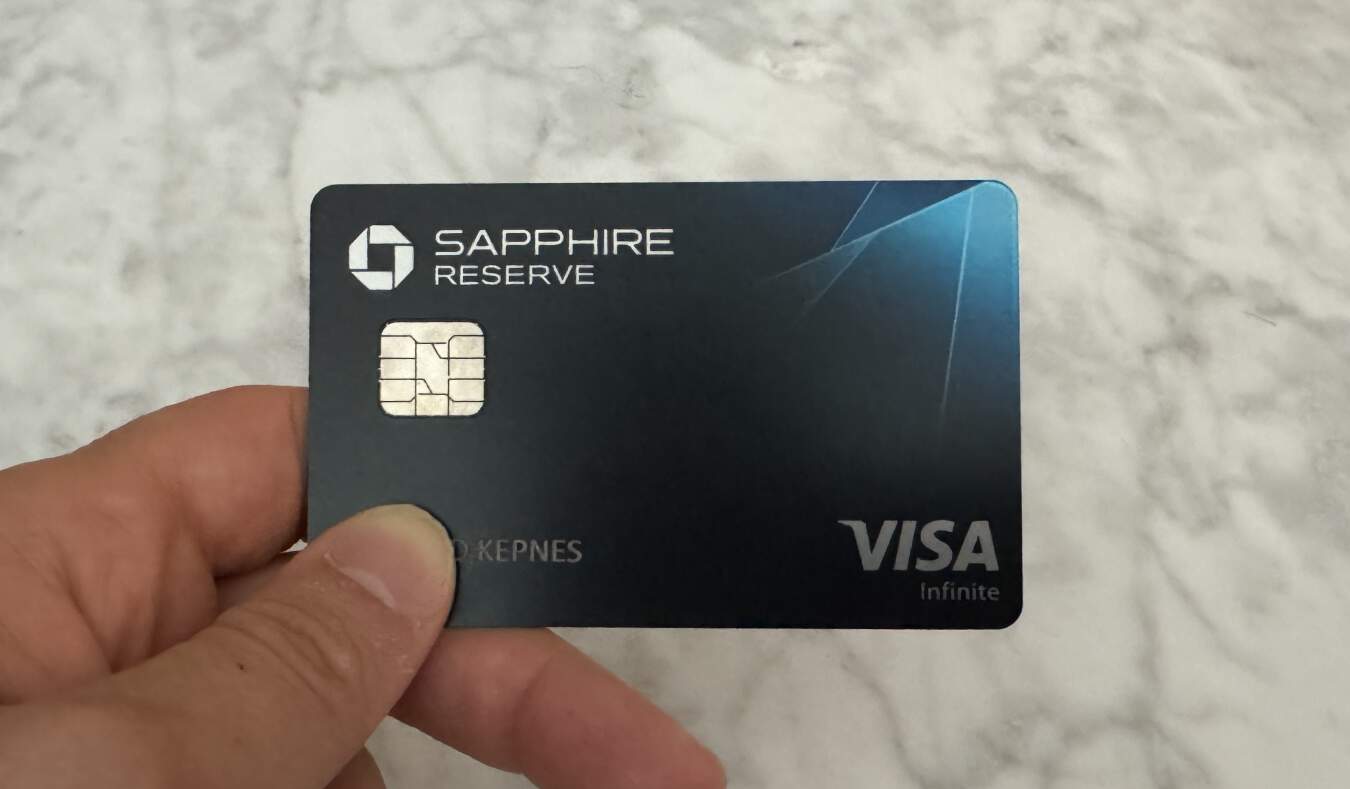We sent reporters to 9 locations to see the eclipse: Here’s what we saw
It won’t happen in the U.S. again until 2044.
But on Monday, a rare, total solar eclipse cut a swath through parts of North America. That’s why TPG sent a team of reporters across the country to cover this incredible and rare celestial event.
The moon passed directly in front of the sun, creating darkness in the mid-afternoon sky for more than four minutes in some places.
Here’s what our intrepid reporters saw, felt and heard from where they were:
Summer Hull in San Antonio
Central Texas had one of the best statistical shots at favorable weather along the path of totality in the year of planning. However, the forecast for the week leading up to the eclipse put a bit of a cloudy damper on expectations of clear weather for much of the Central Texas area.
However, that didn’t stop us from making the five-hour drive from our house to the Hyatt Hill Country Resort on the western side of San Antonio. We joined its eclipse watch party to see the afternoon skies darken and the path of totality pass right over the resort’s golf course.
Mostly cloudy skies did prevent consistent viewing as the sun shifted behind the moon in the hour leading up to the moment of totality. Still, we did catch a few peeks during the partial phase of the eclipse. Meanwhile, the resort played music and had things like eclipse t-shirts and even signature eclipse cocktails on offer.
Then, at 1:33 p.m. local time, the winds picked up, the temperature dropped, the birds quieted, and what looked like dusk quickly enveloped the golf course. Fellow resort guests cheered and we broke out our glow sticks and glow-in-the-dark glasses for the less than two minutes in the darkness we got to enjoy on this eastern edge of the path of totality.
We watched the eclipse next to a couple who had made the trip from Denver. We all marveled together about how this must have felt to witness before the days of modern technology if you didn’t know it was coming. We knew it was coming, and it still took our breath away to plunge into almost total darkness within seconds in the middle of the day.

Daily Newsletter
Reward your inbox with the TPG Daily newsletter
Join over 700,000 readers for breaking news, in-depth guides and exclusive deals from TPG’s experts
1 of 2
Watching the eclipse from the San Antonio area. SUMMER HULL/THE POINTS GUY
Since we were on the edge of the path, it was over very shortly after it began, and we started our drive back home. It took longer this time because of all the other traffic heading east toward Houston and points beyond the path that cut through Central Texas. The moment of totality in Texas was over, but for other parts of the country, it was just beginning.
Tarah Chieffi in Indianapolis
The Indianapolis Motor Speedway — home of the annual Indy 500 race — is typically loud on and off the track. The cars are roaring by at speeds upward of 220 miles per hour, and more than 300,000 fans are cheering on their favorite racers.
As the solar eclipse neared totality just before 3:06 p.m. local time, however, the crowd was noticeably silent. We had beautiful, sunny weather in Indianapolis. However, with each degree the temperature dropped and each shade darker the sky got, the 50,000 attendees at the track’s sold-out total solar eclipse event stared in awe at the sky (safely through the lenses of their eclipse glasses, of course).
Indianapolis was already expecting nearly 100,000 visitors for the eclipse, but when weather forecasts took at turn for the worse in other major cities along the path of totality, that number got quite a boost. About 10% to 15% more people headed to Indianapolis, resulting in a total economic impact of $28 to $48 million.
I live only two hours from Indianapolis, so it was a no-brainer to make the drive and witness this once-in-a-lifetime event. There were 70 events held all over the city. There was the free “Lunacy” event at White River State Park with food trucks, music and more as well as the “Total Eclipse of the Art” event at Newfields, home to the Indianapolis Museum of Art.
There was no bad spot to watch the eclipse in Indianapolis. Still, standing near the finish line of such an iconic track while experiencing the three minutes and 46 seconds of darkness as the moon totally blotted out the sun made the event even more memorable.
Melissa Klurman in Rochester, New York
It was 3:06 p.m. local time, and we had 14 minutes before totality in my location just outside of Rochester.
I’d driven five hours up from New Jersey to Genesee Country Village & Museum for its Solar Spectacle Festival to watch the eclipse in a peaceful 19th-century village. Unfortunately, the sky morphed from what I was calling “partly cloudy” to “mostly cloudy,” and then straight up drizzling.
As I scanned the skies, looking for any glimmer of sun, museum docent Rick Huff said, “You know what they say about the weather in Rochester? If you don’t like it, wait five minutes and it will change.” I hoped he was right, but as the time for totality approached, we still had nothing but gray skies.
There were hundreds of fellow sky watchers around the field, but it was nearly silent as everyone collectively started to realize we were not going to witness much of anything instead of the history we’d all hoped for.
Then, something almost, well, magical happened. The sky around us went dark, darker, and then…pitch black. Although we couldn’t see the sun or the shadows of the moon crossing it, we still experienced the effects of a total solar eclipse.
People begin to cheer and clap. A young boy near me yelled, “Totality!” The air became icy cold, and it felt like the early hours of the morning. Then, a halo of blue-tinged light formed around the village, and it felt as though someone was turning a dimmer switch back to high; the light around us gradually got brighter.
We basically experienced sunset, midnight and sunrise, all in the course of four minutes. The crowd at the living history museum cheered again as the sky returned to its pre-eclipse fuzzy gray, and the drizzle continued to fall.
I never did see the sun during the eclipse of 2024, but as the festival promised, it was still a solar spectacle.
Zach Griff in the skies over Arkansas
Lots of fanfare and limited views. That was the vibe on Delta Air Lines’ special solar eclipse flight from Austin to Detroit on Monday.
In anticipation of the eclipse, Delta scheduled two one-of-a-kind solar eclipse flights that operated in the path of totality. The first, from Austin to Detroit, sold in less than a day. So, the airline added a second one from Dallas-Fort Worth, which was also fully booked within hours.
With one-way fares starting at $699 in economy and climbing to over $1,299 for first class, I would’ve expected an amazing view of totality from 30,000 feet. After all, how much better could it be seeing the eclipse from above the clouds that covered Austin on Monday morning?
1 of 3
ZACH GRIFF/THE POINTS GUY
What I got instead was a momentary glimpse of the action (along with a strained neck from contorting myself into an ideal configuration, looking upward to catch a peek from the Airbus A220’s oversized windows.)
To be fair, I saw the total eclipse for just a few seconds, and it was memorable. But my pictures and videos certainly don’t do it justice. After all, with the eclipse traveling at 1,600 miles an hour and the one-year-old jet being propelled by a 120-mile-per-hour tailwind, the physics just weren’t in our favor.
Plus, with the increased air traffic in the path of totality on Monday, the Federal Aviation Administration didn’t let the pilots make a complete “S-turn” with enough banking to give both sides of the plane a front-row view of totality.
Though my view of totality wasn’t as impressive as I would’ve hoped, it was mesmerizing to see how the cabin and earth below us started getting dark in the moments leading up to totality. Despite being just 1:45 p.m. local time, it felt like the sun was about the set for the day. (I even noticed some passengers letting out a yawn.)
1 of 3
ZACH GRIFF/THE POINTS GUY
As an aviation enthusiast, there was no better place for me to watch the eclipse than onboard a flight — even if it made for a much more challenging viewing perspective than I would’ve anticipated.
That’s especially true because Delta (literally and figuratively) rolled out the red carpet on Monday. It started from the moment I stepped inside the Austin Sky Club. A cheery receptionist welcomed me inside and showed me the special solar eclipse glasses Delta was handing out in partnership with Warby Parker.
1 of 9
ZACH GRIFF/THE POINTS GUY
My next stop was meeting the bartender, who had just whipped up two specialty solar eclipse-themed cocktails — a tequila sunrise and a dark side of the moon espresso martini — which were selling quite well, the bartender said.
1 of 4
ZACH GRIFF/THE POINTS GUY
At the Sky Club, I also caught my first glimpse of my fellow passengers, many of whom were wearing commemorative T-shirts and eclipse-themed gear. (My favorite was a gentleman’s shirt depicting an astronaut with solar eclipse glasses velcroed to its face.)
1 of 4
ZACH GRIFF/THE POINTS GUY
From the Sky Club, I made my way to Gate 10 for the official start of the party. The gate area was adorned with a massive celebratory balloon arch. There were at least 20 Delta employees wearing eclipse gear and carrying signs with the airline’s eclipse motto, “climbing the cosmos.”
1 of 4
ZACH GRIFF/THE POINTS GUY
The excitement was palpable from everyone, including the passengers who went to great lengths to book this flight. One traveled from Amsterdam for the occasion. Another waited until this flight to propose to his longtime girlfriend. (She said yes.)
One Diamond Medallion removed herself from the 52-person upgrade list for fear of being upgraded to an aisle seat.
Nearly everyone knew what they were getting themselves into, except for the six passengers who said they had no idea they had booked a special eclipse flight. That led to a celebratory atmosphere, with lots of music, cheering and picture-taking.
1 of 2
ZACH GRIFF/THE POINTS GUY
Even the hand-picked crew with an average of 30 years of seniority was getting in on the fun. The two captains, Phil Marshall and Phil Daniels, are in charge of training and oversight of the A220 fleet; they even spent time in the flight simulator last week practicing the maneuvers needed to safely give everyone a view of totality.
The party continued once on board. Passengers exchanged eclipse stories, the pilots handed out commemorative trading cards, and people “ooh”-ed and “aah”-ed as they got to their seats to find fully stocked swag bags with treats, gear and eclipse glasses.
1 of 2
ZACH GRIFF/THE POINTS GUY
“Who is excited?” the lead flight attendant asked over the PA system during boarding. After a raucous round of applause, she exclaimed, “You know what, I’m not going to lie, your crew is very excited, too.”
1 of 5
ZACH GRIFF/THE POINTS GUY
We had a slow taxi to the runway, as the dispatchers wanted to slow us down to approach totality at their previously designated time (around 1:57 p.m. local time).
1 of 2
ZACH GRIFF/THE POINTS GUY
Once airborne, the flight attendants quickly came through the cabin with a run-of-the-mill snack and beverage service, which was suspended midway when the pilot asked the lights to be dimmed and the galley carts to be stored. That could only mean one thing: the eclipse was coming.
Then, it happened. First, the right side of the plane got their view, and then the left side got theirs.
Moments later, the sun was bright once again. I counted 25 passengers AirDropping photos to each other while others took pictures of other people’s shots. We were just 90 minutes into the flight, but it was as if everyone had been best friends for years.
Before long, it was time for our initial descent. We touched down on Detroit’s runway 22R and had a short taxi to the gate.
The party didn’t stop once we deplaned; there was an elaborate arrival celebration at Gate A75, where passengers enjoyed some light bites, picked up their commemorative T-shirts and chatted with one another. Astronaut Scott Kelly even made an appearance at the after-party.
Some lingered around for a while, and others made a beeline for their onward flights. As for me, I slowly moseyed over to my next flight.
On my way, I overheard a passenger say, “Next time, let’s do it from the ground.” While the Delta flight was no doubt a highlight for this aviation enthusiast, I wholeheartedly agree. When 2044 comes around, you’ll find me watching the eclipse from terra firma.
Hannah Streck in Cleveland, Ohio
When I told friends I was going to be heading to Cleveland to view the eclipse, the resounding response was: “Why?” or “Oh?”.
But we so got lucky with the entire experience.
Driving the eight hours from Manhattan to North Olmsted, Ohio, on Saturday was a journey of its own — complete with great vintage and contemporary thrifting as well as a decent craft beer scene.
We were welcomed into a friend’s family home and got the true local suburban experience. Homes in the cul de sac all had lawn or camper chains out in their driveways. A few even had cornhole games set up to enjoy the day.
We truly lucked out with the weather: a high of 70 with no clouds in the sky.
Hearing the robins’ chirps steadily go silent from the partial eclipse to the moment of totality made me completely aware of my surroundings. About a minute before totality hit it had gotten so dark that the street and house lamps automatically turned on.
1 of 2
HANNAH STRECK/THE POINTS GUY
I could hear the whooping and cheers when it peaked. Fireworks went off in the distance to welcome this truly once-in-a-lifetime event into our lives. Experiencing those four minutes was totally worth the 16-hour round-trip drive.
Mimi Wright in the skies over Missouri and Arkansas
The buzzing before the solar eclipse at gate E14 in St. Louis Lambert International Airport (STL) was palpable before Southwest flight 1910 to Houston’s William P. Hobby Airport (HOU).
With moon balloons, signs, hula hoops and various other decorations adorning the gate, travelers prepared for a once-in-a-lifetime experience of seeing a rare solar eclipse midflight.
As I boarded the flight and made my way down the jet bridge, it honestly felt like entering a portal to space … and beyond.
I’ve always been enticed by space, so much so that when I was in fifth grade, I told my teacher that I wanted to be an astronaut. That quickly changed when I realized I was much better with words than numbers, but my amazement of the beyond still stuck around.
The Southwest staff — on the tarmac, at the gate and on the plane — wore shirts to mark the occasion, made signs to thank passengers and told fun facts during the flight in “solarbration” (as Southwest called it) of the solar eclipse.
As we boarded, they handed us goodie bags filled with a pin, a specially designed cookie, a Moon Pie, Sun Chips and special Southwest eclipse glasses.
On the flight, Southwest offered three specialty drinks to mark the occasion and a voucher for one free drink. We could choose between a Red Sky (bloody mary), a Stargazer (sparkling wine and orange juice) and the Sun Flare (vodka and orange juice). I settled in with my Sun Flare, and we excitedly took off.
As we reached 10,000 feet, we weren’t exactly sure how much of the eclipse we would see. We were told that the sun would be mostly overhead, which is obviously not ideal considering there are no sun roofs on planes. Alas, the pilot made a few twists and turns on both the right and the left so that each side of the plane had a chance of seeing some of the eclipse.
I’ll be totally honest: I think the view is much better from the ground if you are graced with good weather.
From the sky, I craned my neck as much as possible to see out the window, but I only got a few glimpses of the eclipse as we traveled through the path of totality. It was almost cooler to see the light from outside dim the light inside the cabin. It felt like we traveled overnight and arrived at our destination in the morning, all within about 30 to 40 minutes.
Despite the iffy view, seeing the little sliver of sun peeking out from the moon was so cool, and being up in the sky for the eclipse was an experience I will never forget.
Tanner Saunders in upstate New York
For my first total eclipse, I drove to Lake Placid, New York — home of the 1980 Winter Olympics — early Sunday morning from Brooklyn. I was hoping to beat the traffic and onslaught of people heading to the path of totality.
Fortunately, there wasn’t much traffic on the five-hour drive, but by early afternoon, Main Street was teeming with tourists. Everyone was talking about how the weather forecast called for thin cloud coverage, so we might just be in the best spot in the country for eclipse viewing.
While Lake Placid had a lot of events going on, including viewings at various Olympic venues throughout town, I watched the cosmic event at the stunning resort Whiteface Lodge. People from near and far gathered for a party featuring eclipse-themed cocktails, a locally brewed Eclipse beer, snacks, music and games to keep folks busy before the main event.
It felt like a fun family barbecue. People were setting up chairs facing the sun, snacking on burgers and gearing up to watch the total eclipse from the year-round heated swimming pool at the resort. As the general manager explained to me (and I experienced myself), the resort is like a very luxurious camp. (Think: rooms with indoor fireplaces, a basement bowling alley and friendly staff always willing to make your day better.)
During my stay at Whiteface Lodge, I met a handful of interesting people. Janice and Doug Berman, a couple from the Boston area, decided to stay at the resort for the eclipse, which happened to fall on their 35th wedding anniversary. “The universe played in our favor,” Janice Berman told me at the eclipse party. “So we feel pretty privileged.”
With about 10 to 15 minutes until totality, the air in upstate New York started getting colder, and the coloring of the world changed. It was almost like someone was slowly putting a sepia filter over my eyes.
A minute before full totality, around 3:24 p.m. local time, people started cheering and celebrating. Then, just as someone had explained to me, the moon flipped a lightswitch. THe entire resort went dark, and emotions were high.
With perfect visibility, the total eclipse was unlike anything I’d ever seen in my life. As the darkness taking over, the resort’s automatic nightlights turned on. People were cheering, laughing and hugging, and I heard multiple people say the same thing: “This was worth it.”
Then, just as fast as it started, someone flipped the switch back on. The dark of night turned back into a bright and clear sunny day. Some people lingered and enjoyed the outdoors, and others, like myself, hit the road. In fact, it felt like nearly everyone in upstate New York hit the road.
My final drive back to Brooklyn would typically take about five hours; however, after spending five hours in nearly standstill traffic with no cellphone service, I had only made roughly 75 miles south. I pulled over at a McDonald’s (alongside dozens of other cars), stood outside of the fast-food joint and used its Wi-Fi to book a hotel. I called it a night and went to rest, relax and reflect on what was seriously one of the most incredible moments of my life.
Bottom line
TPG photo editor, Wyatt Smith, also had a front-row seat to the eclipse from his home base in Austin, and he captured some incredible shots.
We also had lots of excited employees from The Points Guy and Red Ventures at TPG headquarters in Manhattan, where we got to see the eclipse at 90% totality. We enjoyed mooncakes and joined in the fun as thousands of our fellow New Yorkers stood on rooftops all around our Union Square neighborhood.
Even TPG founder Brian Kelly got in on the action. He got a look at the eclipse thanks to help from a stranger.
The next major eclipses in North America won’t happen until 2044 and 2045, so it will be a while.
If you missed out on the fun and don’t want to wait another 20 years, you can do what we do best at TPG and travel. People in Greenland, Iceland, Spain, Russia and parts of Portugal will get a total eclipse in August 2026, so there’s plenty of time to plan your next eclipse trip.
Related reading:

